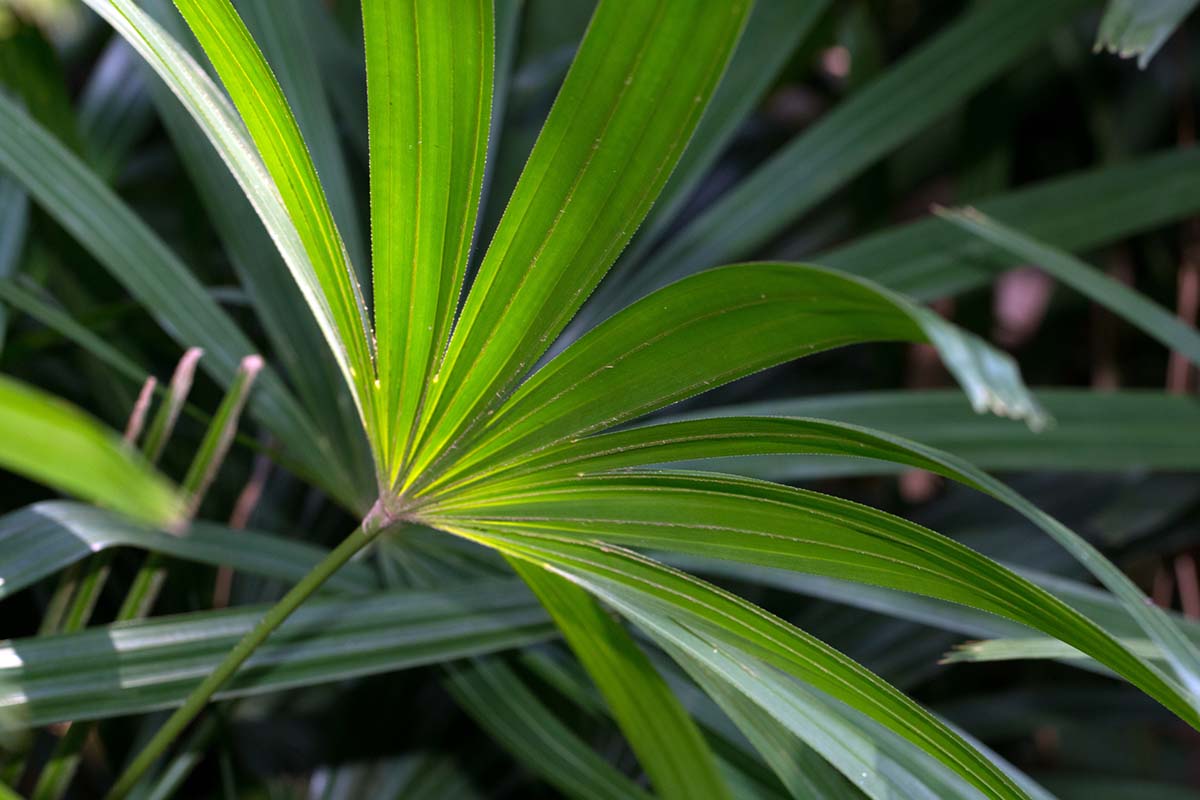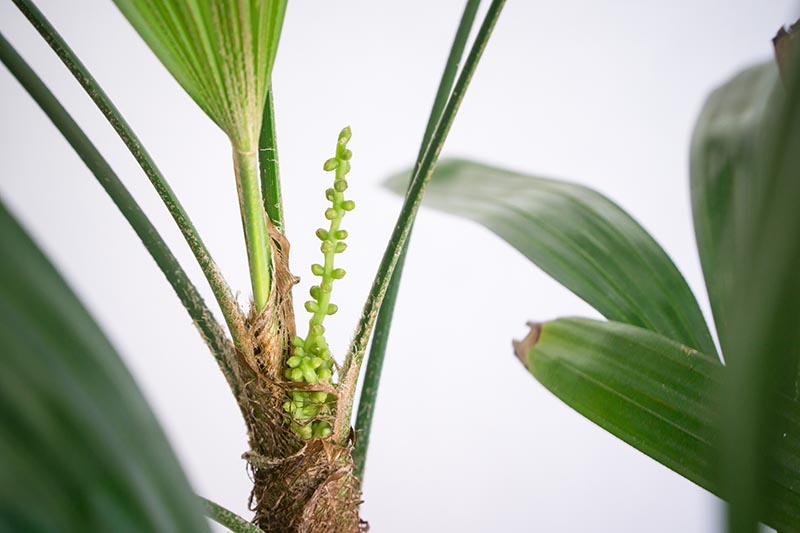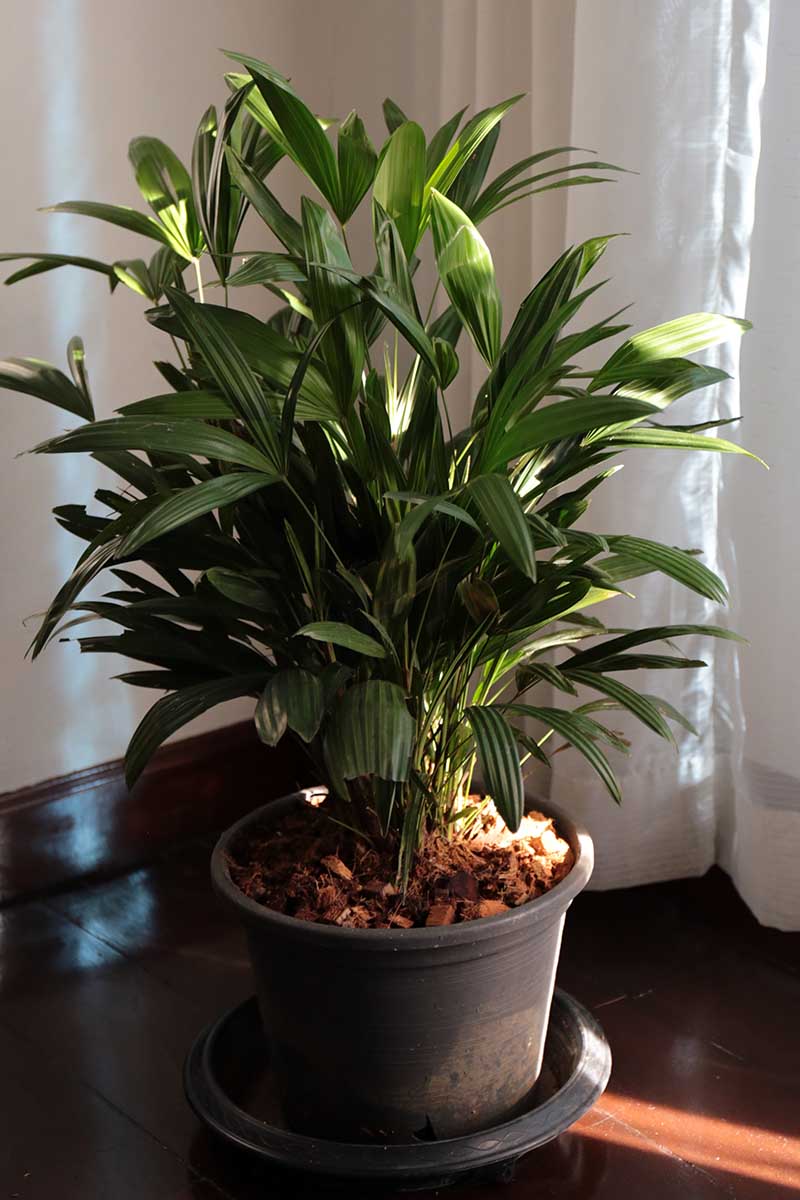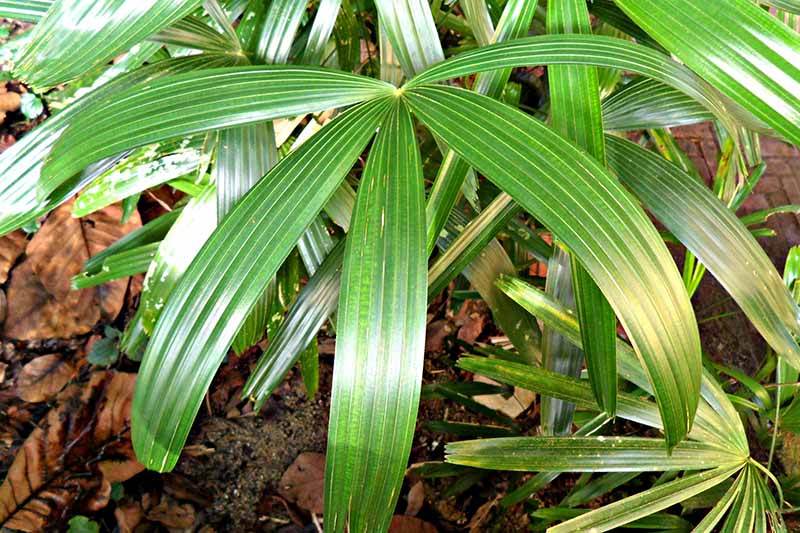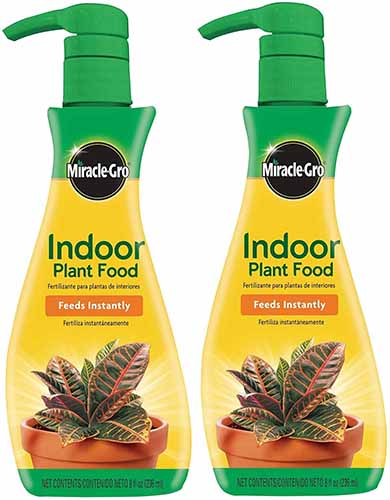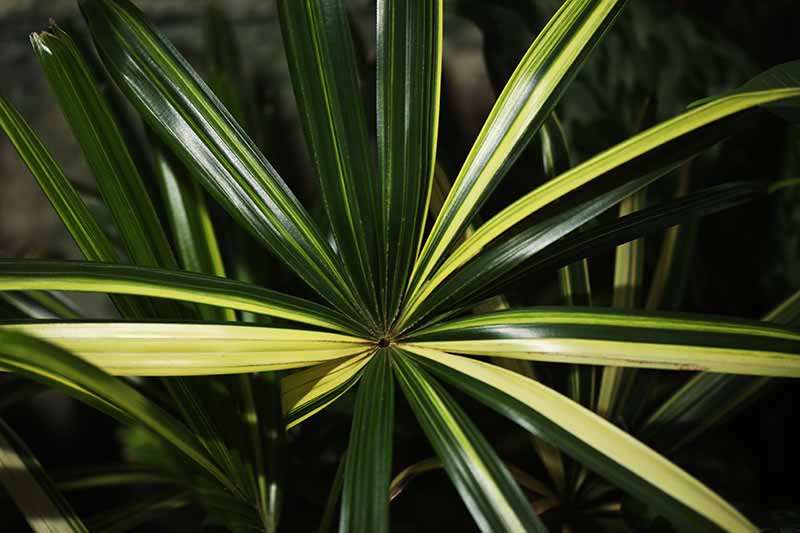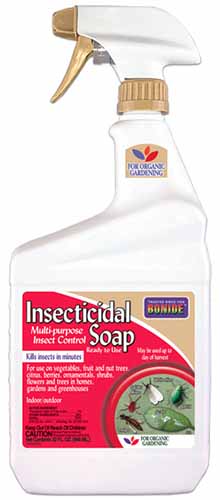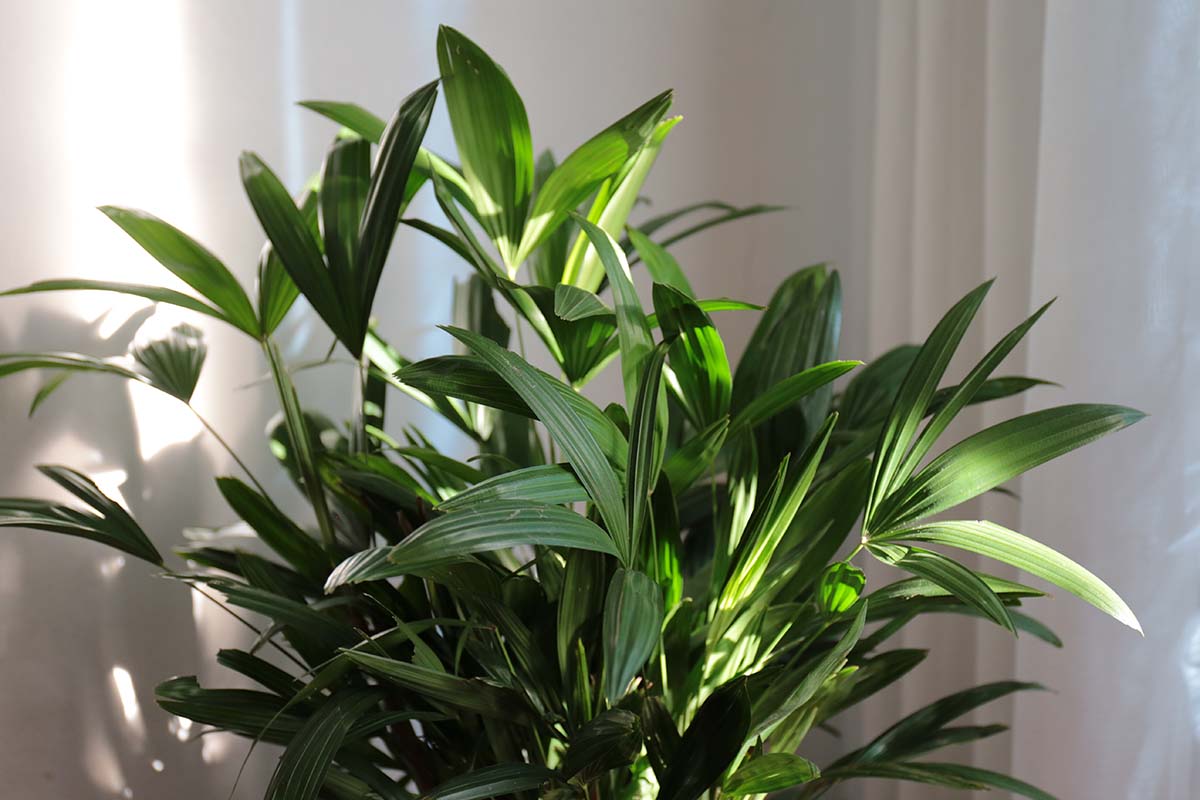Unlike other palms, these plants aren’t all that tender. They can even handle a freeze now and then, which makes them ideal if you want to put a tropical-looking palm near a door or cold window. It’s no wonder these plants were so highly valued that they were grown most notably by the wealthy and aristocratic people of Japan, throughout the past several centuries. We link to vendors to help you find relevant products. If you buy from one of our links, we may earn a commission. Here’s what this guide will cover: As a true palm, these plants stand out from some of the other palm-like plants out there. But what makes them special is their hardiness and adaptability. Ready to learn more? Here we go!
Cultivation and History
Elegant lady palm, aka bamboo or broadleaf palm, is a true palm that belongs to the Arecaceae family. It’s known botanically as Rhapis excelsa, which means “tall needle” in Latin. However, lady palm certainly isn’t the tallest palm, despite its grand name. Standard plants can grow up to 10 feet tall outdoors, but they often stay under five feet when grown indoors. It’s sometimes confused with the sago palm, which it is not related to, or the majesty palm, which it is. Lady palms come from southeastern China, Taiwan, Laos, and Vietnam, but no one is exactly sure where it grows natively today, since there aren’t any known wild specimens. This species made its way to Japan in the late 1600s, where plants were owned by the wealthy and aristocratic, and then to Europe in the late 1700s. Today, it is cultivated and grown in gardens around the world. In the US, it’s hardy in USDA Hardiness Zones 9 to 11, where it may be grown outdoors year-round as a perennial. The evergreen leaves grow on bamboo-like canes in a fan-like formation. Each leaf is lanceolate in shape, growing up to 18 inches long. The tips of the leaves aren’t sharp like those of many other palms, but rather blunt and ragged. This is a good way to help distinguish it from other palms. It spreads underground via rhizomes, though it doesn’t become invasive. Fleshy yellow flowers emerge in the spring on panicles, though you won’t see these as often on indoor specimens. The species is dioecious, which means the male and female flowers grow on separate plants.
Propagation
Lady palms can be reproduced by seed, division, and cloning. Cloning isn’t viable for home growers, but the other two methods are, and we’ll cover them briefly here. Established plants can also be purchased at nurseries for transplanting. Remember that the male and female flowers grow on separate plants, so you will need one of each to produce viable seeds. Purchasing seeds may prove to be a better option.
From Seed
If you provide the right temperature, it’s easy to grow baby R. excelsa plants. Seeds need to be kept at 80°F or slightly warmer in order to germinate successfully. Fill a seed-starting tray with a soilless potting medium. Sprinkle seeds on the soil and place on a heating mat or in a room that stays at least 80°F if not warmer. Water the medium using a spray bottle and keep it moist but not wet. The medium should feel like that good old well-wrung-out sponge. After about three weeks, you should see seedlings popping up. Once they’re a few inches tall with several little palms forming, you can transplant them.
From Divisions
Because these plants tend to become rootbound quickly, dividing is an excellent way to propagate them. They also send up shoots from the rhizomes below ground, and these can be divided from the rest of the plant to create more. To do this, remove the mature plant from its container and brush away as much of the dirt as you can. Then, use a pair of clean scissors or a knife to cut through the roots to separate a section of growth. You can divide the plant in half or just slice away a small section, depending on your preferences. Gently tease the two pieces apart, and place one part back in the container it was originally in. Fill in with fresh soil. The division should be placed in a new container. Fill around that root ball with fresh potting soil as well. Water well, to ensure that the soil settles and the roots are moist. When choosing potting soil, select something that is described as water retentive, or look for a formula that has plenty of coconut coir, rice hulls, peat moss, or vermiculite.
Transplanting
Most people opt to purchase a started plant at a nursery or home store. If this is the method you choose, you’ll want to move the plant from its old home and place it into a new pot. Choose one that is at least a few inches larger than the container it is growing in and that has at least one drainage hole. If you picked a cultivar that grows to a large size, select a heavy container made of ceramic, cement, stone, or something similar. These plants can become top heavy and they’re prone to tipping over in light containers. Place a little potting soil in the base so the palm will sit at the same height in the container that it was originally. Now, gently loosen the roots by pressing the sides of the container or running a butter knife outside the edges of the potting soil. Loosen the roots and knock away any loose soil from the root ball, and place the plant into the new container. Fill in around the sides with potting soil and gently tamp it down before giving your plant a good drink of water.
How to Grow
Once this pretty lady becomes a bit more established, it will forgive you if you forget to water it now and then. If you want it to look its best, however, regular moisture will do the trick. Keep the soil just moist but not wet, like a sponge that you’ve squeezed out really well. Honestly, I’m terrible at figuring out when a plant needs water. If that describes you, too, you should probably invest in a moisture meter to help take the guesswork out of the equation. During the winter, reduce watering. The top inch of soil should dry out before you add more water. While they can survive in deep shade, these plants really should be located somewhere that they will receive bright, indirect light for several hours each day. Direct sunlight is too strong for this palm, however. One extra-nice thing about R. excelsa is that, unlike many other houseplants, it doesn’t mind a cold draft. That means you can place it near a door, and even in the winter when cold air comes rushing in, it won’t suffer. In fact, if you forget and leave it outside during a brief freeze, it will be totally fine. Feel free to put it outside on your patio during the warm summer months, but keep it protected from direct sunlight.
Growing Tips
Keep the soil moist but not wet.Allow the top inch of soil to dry out during the winter between watering.Provide bright, indirect light.
Maintenance
Remember how we talked about this plant spreading via rhizomes? That’s a potential drawback for indoor gardeners. Potted lady palms tend to become rootbound fairly rapidly, so this is one plant you’ll need to be diligent about repotting. You might not be able to tell that the plant is feeling constrained by the looks of it, though you may see roots coming out of the drainage holes. Your options are to gently dig down a little with your fingers to feel around and see it feels tight down there in the soil, pull the whole thing out of its container and look at it, or just assume it needs repotting every year or two. When you repot, you can either go up a pot size or two, or divide the plant as described above, and place it back in its original container with the new division potted in a second container. If this sounds like far too much work, pick a dwarf cultivar. These are slow-growing and take a long time to fill up a container – we’re talking about a decade, give or take.
Aya Nishiki
A sport of ‘Zuikonishiki,’ this beautiful variegated cultivar has a single cream-colored stripe down the center of each leaf, and fainter stripes surrounding it. In the spring and summer, use an all-purpose liquid houseplant fertilizer like Miracle-Gro’s Indoor Plant Food and dilute it with water so that it is half strength. Miracle-Gro Indoor Plant Food Feed once in the spring as growth starts, and twice during the summer. Lady palms don’t need more than that.
Cultivars to Select
If you want to get started with a species plant, FastGrowingTrees.com carries R. excelsa in two sizes: one to two feet tall or two to three feet tall. Lady Palm R. excelsa has more cultivars than any other plant in the genus. It’s also the only one with variegated cultivars available. If you keep an eye out while you’re shopping, you’re sure to run into some interesting ones. Here are some of the most common: This is a full-sized cultivar and it has all the same requirements as the standard lady palm, but it does better with slightly less sun.
Gyokuhu
‘Gyokuhu’ is a dwarf cultivar with solid green leaves. If you want to create a palm bonsai, this is an excellent option. Not only does the plant stay under 18 inches tall, but the leaves are proportionally small. It also grows slowly, so repotting isn’t a constant concern.
Kodaruma
‘Kodaruma’ is one of the tiniest lady palms. It grows extremely slowly and stays under a foot tall. However, it sends up lots of shoots, which could be a good or bad thing, depending on your needs. If you want lots of palm babies (that are baby palms), this is the one to pick.
Nanzan Nishiki
This is an extremely common cultivar, and another variegated one. It has bright yellow stripes that vary in width and intensity. As with other variegated cultivars, it does best with a little less sun than normal. With a good-sized container and the right amounts of light and water, this one can reach up to ten feet indoors.
Zuiko Nishiki
This dwarf cultivar features pale yellow stripes, and it stays under two feet tall. If it flowers while it’s growing in your home, the blossoms are extremely fragrant.
Managing Pests and Disease
While diseases are rare, most of the common insects that bother houseplants in general will feed on a lady palm if given the chance.
Insects
These palms are pretty tough, and unless they are particularly young or heavily infested, they can easily withstand a visit from pests. The key is to keep an eye out and start treatment as soon as you see the first sign of a problem. Before we jump in, let’s talk about the one common houseplant pest that doesn’t feed on lady palms: red spider mites. If you struggle with spider mites on your other houseplants, these will offer a welcome change for you.
Aphids
No one loves to see an infestation of aphids, but look on the bright side – these common pests are pretty easy to deal with. There are many different species of these sap-sucking menaces, but the most frequent visitor to houseplants is the green peach aphid (Myzus persicae), which can be peach, yellow, or green. First things first, check any plant that you purchase before you bring it home. If you see any critters – or evidence of critters – don’t buy it. Save yourself some trouble. Once safely at home, it always helps to do whatever you can to keep your plant healthy. That way, if any aphids do drop by, they’re less likely to make your plant sick. Providing appropriate light, water, and food are the ways to ensure a healthy plant. Finally, if aphids do start helping themselves to your plant’s sap, you’ll have to take action. Don’t feel bad, it happens to all of us at one time or another, despite our best efforts. When aphids attack, you’ll see yellow stippling or yellowing leaves, usually starting at the tips.
Mealybugs
Mealybugs look like little mobile balls of waxy cotton. In fact, it’s not unusual to look at them and think you’re seeing signs of a disease rather than an insect snacking on your plant. You might need to do this every week for a few weeks to get the situation under control. If that doesn’t work, get yourself some neem oil or insecticidal soap. Bonide makes a tried-and-true option, which you can buy at Arbico Organics in 12- or 32-ounce ready-to-use containers. Bonide Insecticidal Soap Following the manufacturer’s directions for indoor application, spray the entire plant, taking care to apply some to the undersides of the foliage as well. You can do this once a week, either in addition to wiping the plant and blasting it with water or on its own, until the bugs are gone. While there are many species that will chomp on houseplants, Palmicultor palmarum is the one that can’t resist making a meal of palms in particular. Regardless of the species, you can get rid of these pests by dipping a cotton swab in rubbing alcohol and wiping it on each mealybug. This removes their waxy coatings and makes it so the insects are susceptible to the changing temperatures, humidity, and natural predators in their environment. If you need an extra boost, insecticidal soap is effective against these pests, but you need to treat them once a week for a month or more until there is no more evidence of the insects. Learn more about how to deal with mealybugs in our guide.
Disease
Besides being beautiful, lady palms are pretty tough. They are rarely bothered by the myriad diseases that impact houseplants. In fact, there’s only one that makes a regular appearance.
Leaf Spot
When leaf spot impacts a lady palm, it’s not usually serious. Most cases are extremely mild. Look for yellow streaks or faint yellow spots on the foliage. These are caused by fungi in the Pseudocercospora genus. Fortunately, you don’t need to resort to chemicals to eliminate this problem. Just trim away any infected leaves. Don’t hold back! Even if the plant is left with just one or two fronds per palm, it will still survive. When it grows new foliage, the leaves will typically be healthy and disease-free. But if you happen to spot any new leaves with evidence of the disease, just trim them away. Also, be sure to remove any fallen leaves from the top of the soil, since the fungi can live on plant debris. We can’t wait to hear about your own R. excelsa adventures. Which cultivar did you end up with? Let us know in the comments! If you want to expand your indoor tropical jungle, you might want to visit a few of these helpful guides next:
How to Grow and Care for Ponytail Palm IndoorsHow to Grow and Care for Rubber TreesIt’s Easy to be Green When You Grow Pothos HouseplantsHow to Grow and Care for Spiderwort

